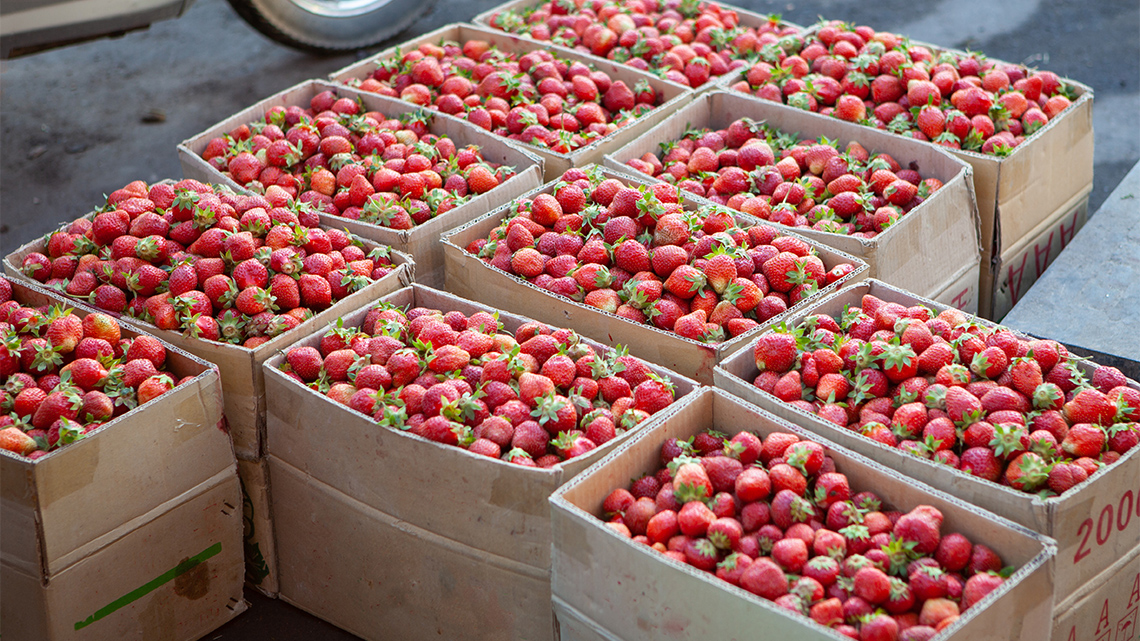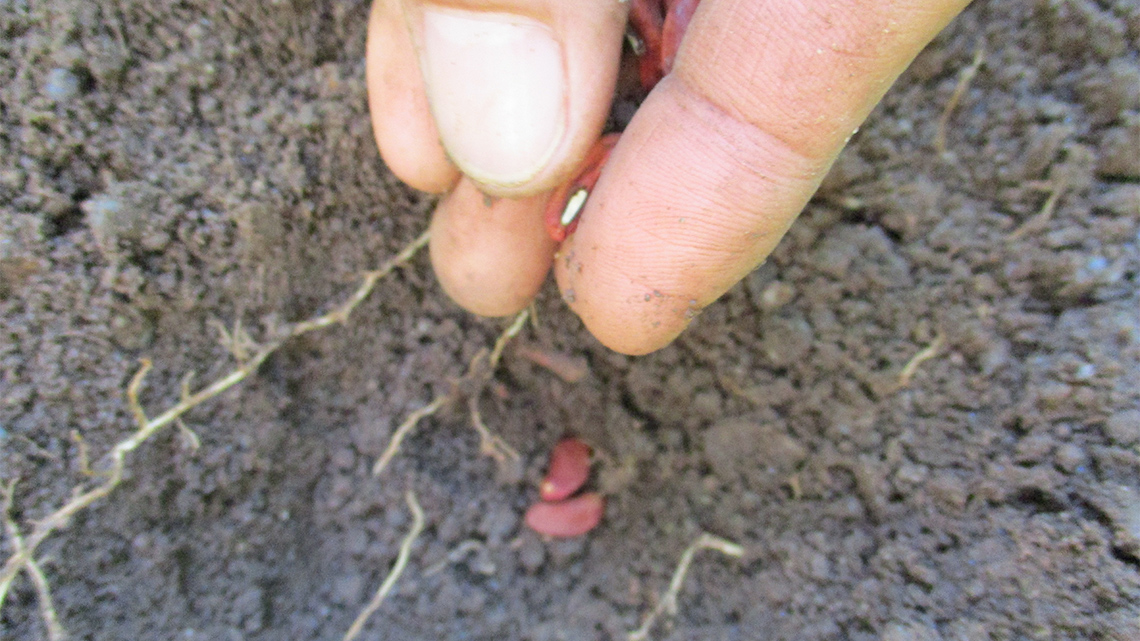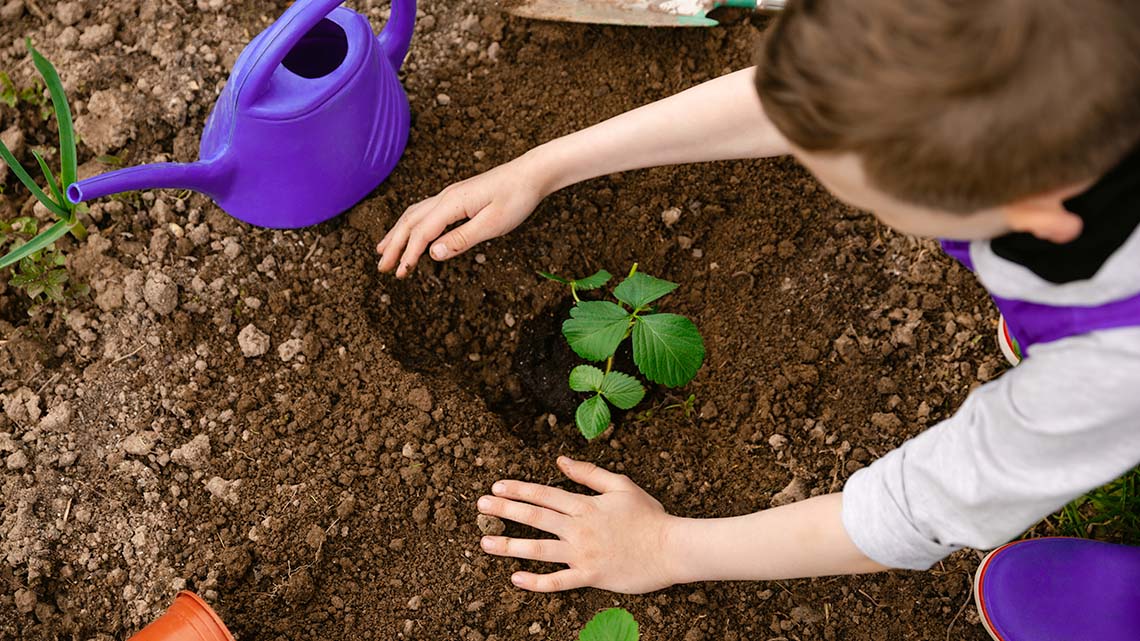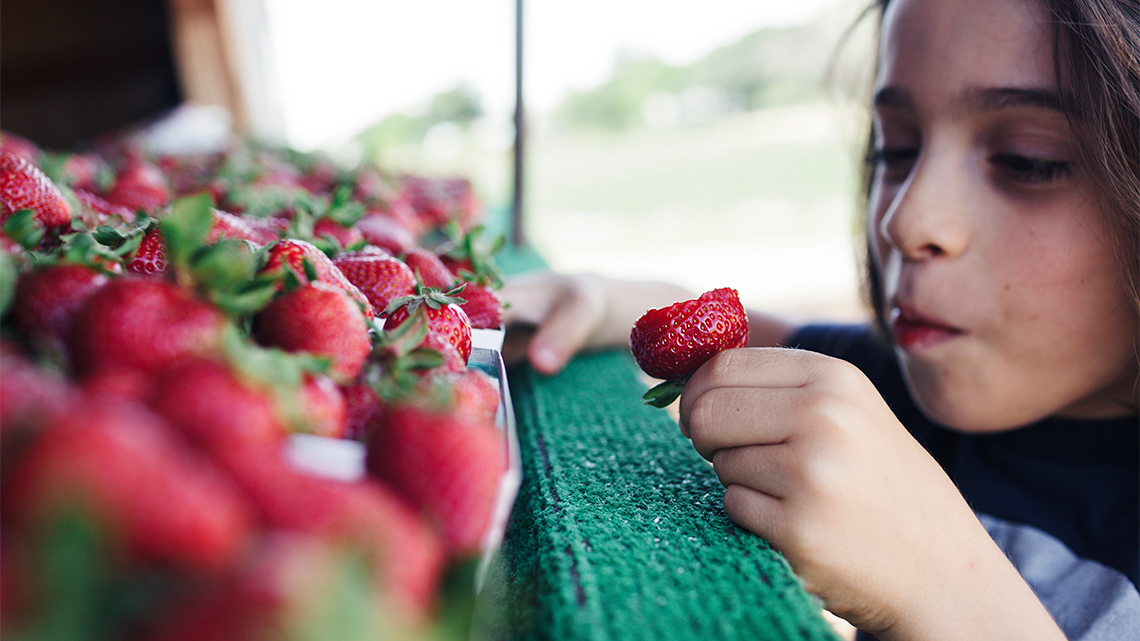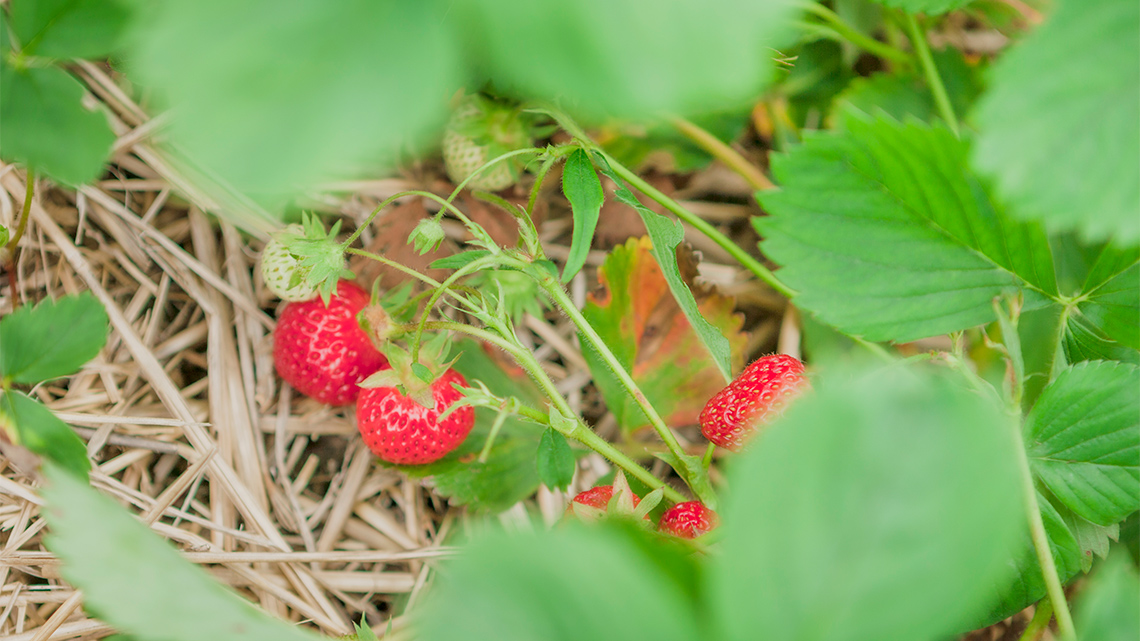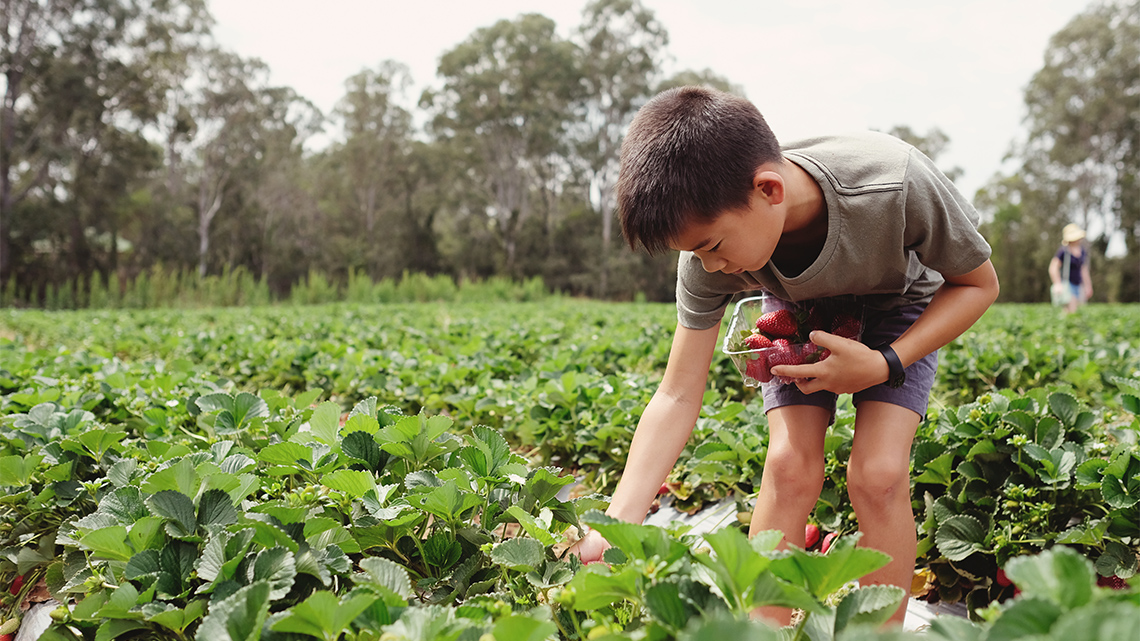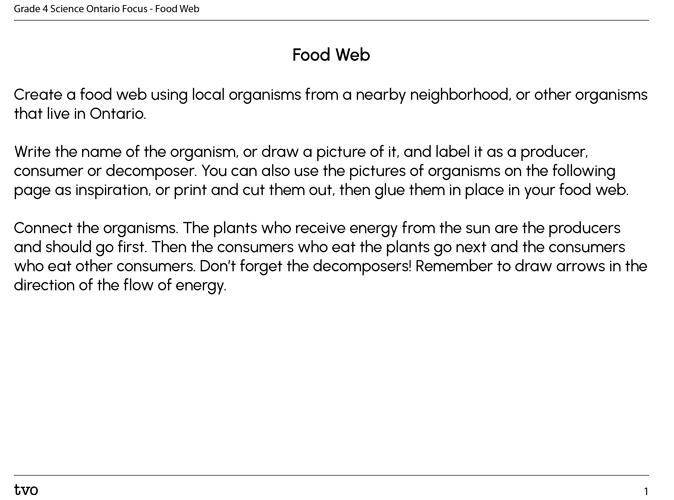Minds On
Where does food come from?
This learning activity highlights people, places, or innovations that relate directly to the province of Ontario. Enjoy the exploration!

Examine the following pictures.
Brainstorm
What’s the sequence?
Number the pictures in a logical order. You can record your thoughts in your notebook or using another method of your choice. If possible, discuss your thoughts with a partner.
Which picture did you choose as the first picture in the sequence? Why? Which picture did you choose as the last?
What story are the pictures telling?
The pictures in the correct order explain the journey of a strawberry from when it is a seed planted in a greenhouse to when it is eaten by people. Humans are consumers who are connected to nature because of their need for food. This chain of events shows how humans get energy from the sun and the food they eat.
Animals rely on nature for their food sources as well.
Brainstorm
Who eats the strawberries?
What animals that live in the forests of Ontario might eat strawberries?
Be prepared to share your ideas or record them.
Action
Wild food chains
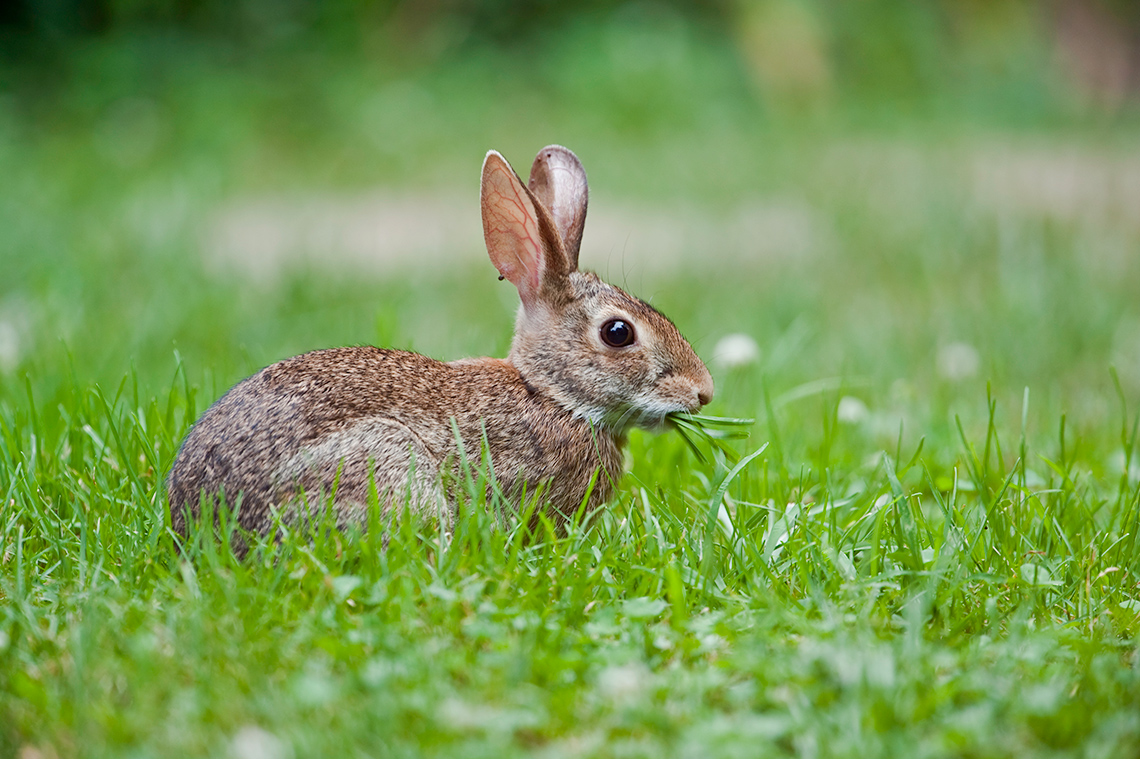
A popular animal that lives in Ontario and can sometimes be seen in busy suburbs is the Eastern cottontail rabbit. Rabbits eat or consume leafy plants, tender twigs, and soft bark to get their energy. Rabbits are called consumers since they eat food to get energy. The plants that they eat are called producers.
Plants are called producers because they produce their own energy. They use the sun’s energy to produce their own food. Humans cannot produce their own food like plants; humans consume plants to get energy.
When plants and animals die, decomposers like bacteria, earthworms, and fungi help to break down organic materials into smaller bits and decay, making nutrients available to consumers.
In the following video, Teacher Andrea helps explain the transfer of energy from the sun to plants and then to animals.
Access this video entitled “Food: You Are What You Eat” to learn more about what plants need to grow and the difference between producers and consumers.
Teacher Andrea mentioned many food chains in the video. Have some fun and draw out a food chain. Try to include at least 4 organisms in your food chain. What is always the first organism at the beginning of the food chain? Don’t forget to include decomposers, which are a vital part of the food chain. Use arrows to help show the direction energy travels.
Complete “Food Chains” in your notebook or using the following fillable and printable document. If you would like, you can use speech-to-text or audio recording tools to record your thoughts.
|
Have some fun and draw out a food chain. Try to include at least 4 organisms in your food chain. What is always the first organism at the beginning of the food chain? Don’t forget to include decomposers, which are a vital part of the food chain. Use arrows to help show the direction energy travels. Here is an example of a simple food chain: 
|
Press the ‘Activity’ button to access Food Chains.
Food webs

Black bears living in the boreal forests of Northern Ontario eat berries, plants, fish, and other small or young mammals. Since black bears eat both plants and animals, they are known as omnivores. As a consumer, black bears are at the top or end of a food chain, because there is nothing in the boreal forest that will eat them.

A map of Ontario showing the Hudson Bay Lowlands in the north, Boreal forest stretching from east to west across the center of the province, the Great Lakes-St. Lawrence Forest in the southeast and southwest, and deciduous forest along the shore of Lake Erie.
However, because black bears eat both plants and animals, their food chain does not go in a straight line or chain. It looks more like a web.
Examine the following diagram to see one example of a food web for a black bear. The food web begins with the sun, the main source of energy.

The web begins with the sun then black spruce tree seeds, sedge grasses and young poplar trees. Arrows point from the black spruce seeds to a squirrel. Arrows point from the sedge grasses and young poplars to the caribou and a moose. Arrows point from the squirrel to a hawk owl, a bobcat, a gray wolf, and a black bear. An arrow points from the caribou to the black bear. An arrow points from the moose to the black bear. An arrow points from the bobcat to the black bear. An arrow points from the hawk owl to the black bear. Several arrows point from animals and plants to earthworms.
Pause and Reflect
Producer, comsumer, or decomposer?
What in the food web is a producer? Consumer? Decomposer? How do you know?
If possible, share your answer orally or in print.
Let’s examine how the energy travels from the black spruce seeds to the black bear. Remember that the arrows show the direction of the flow of energy!
Flow of energy
Sun – black spruce seeds– squirrel – bobcat – black bear
The energy always flows from a producer to a consumer.
Brainstorm
Follow the flow!
Using the previous diagram, follow the flow of energy from the sedge grasses to the black bear. Is there more than one chain?
When food chains interconnect, they are called food webs.
Consolidation
Food webs are fun

Examples of food webs can be found all over Ontario, Canada, and the world. Think about some of the plants, insects, and mammals that live in nearby neighborhoods or in a school playground.
Create a food web using local organisms from a nearby neighborhood, or other organisms that live in Ontario.
Each organism (plant, insect, mammal) could be represented on a rectangular piece of paper or cardboard. Write the name of the organism, or draw a picture of it, and label it as a producer, consumer, or decomposer.
Connect the organisms. Remember that the plants who receive energy from the sun are the producers and should go first. Then the consumers who eat the plants go next, and the consumers who eat other consumers. Don’t forget the decomposers! Remember to draw arrows in the direction of the flow of energy.
Student Tips
Food web tips
Use the following handy checklist to check your work.
Making a Food Web
When making my food web, did I…
Complete the “Food Web” in your notebook, on squares of paper or cardboard, or by using the following fillable and printable document. If you would like, you can use speech-to-text or audio recording tools to record your thoughts.
Reflection
As you read through these descriptions, which sentence best describes how you are feeling about your understanding of this learning activity? Press the button that is beside this sentence.
I feel…
Now, record your ideas using a voice recorder, speech-to-text, or writing tool.
